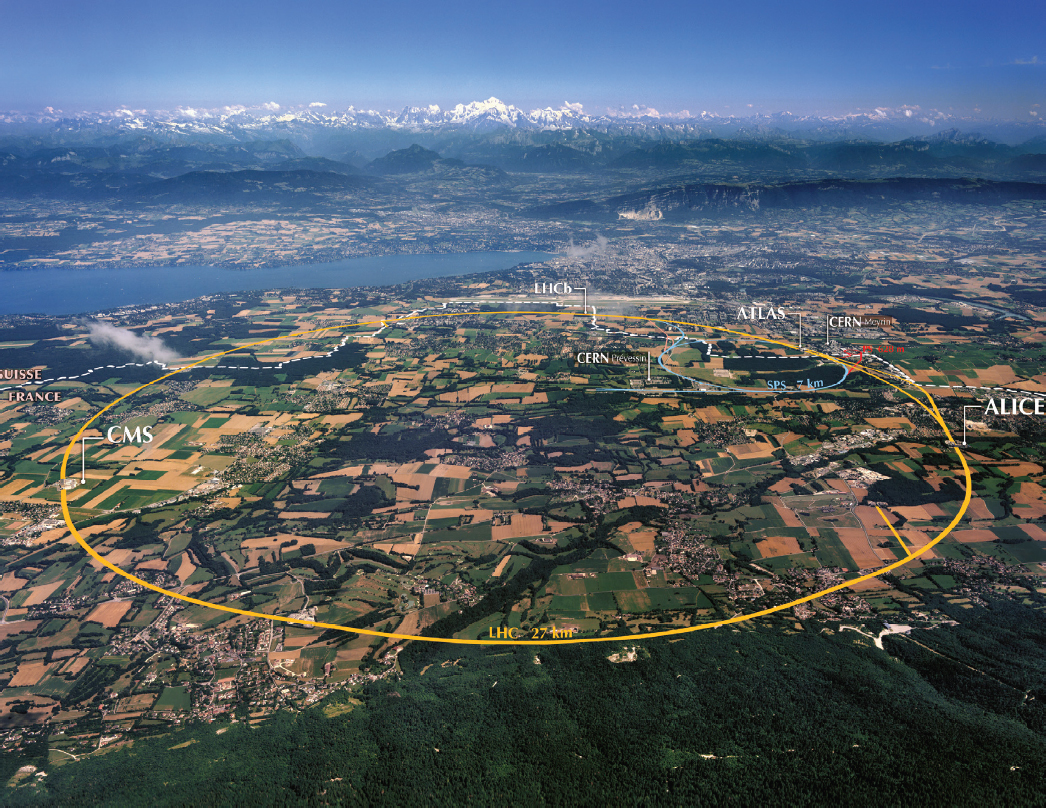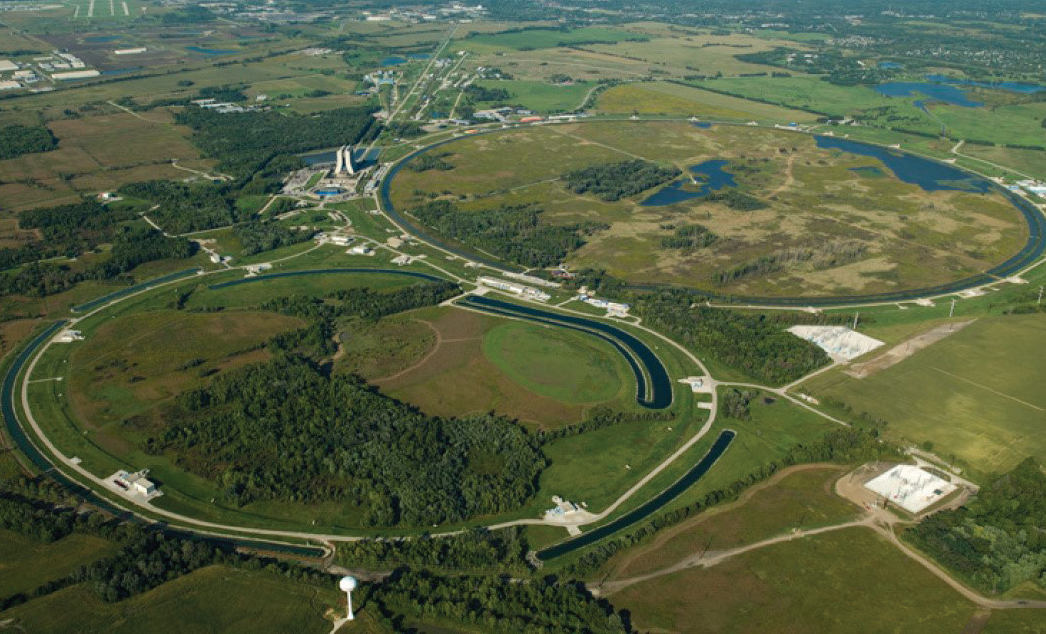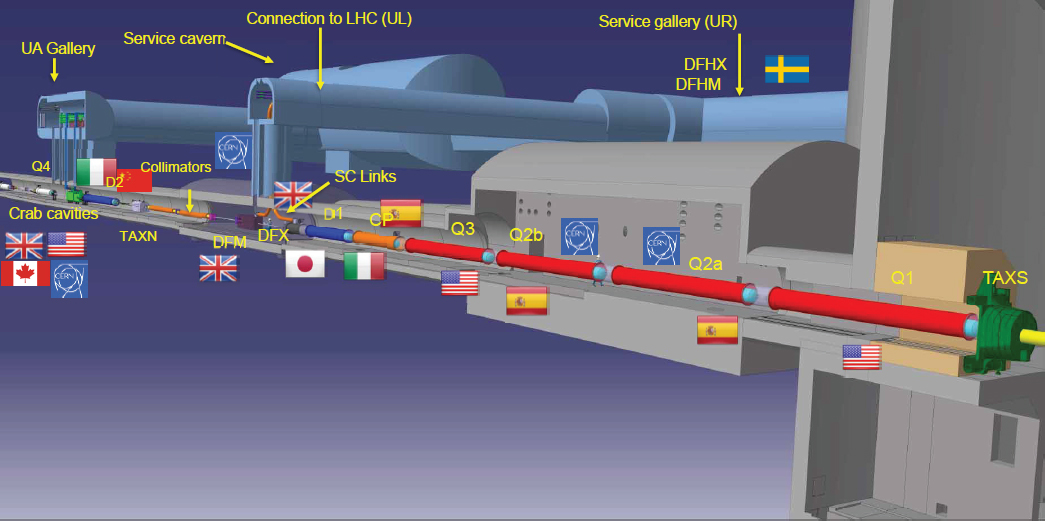Elementary Particle Physics: The Higgs and Beyond (2025)
Chapter: 4 International
4
International
During the first 50 years of particle physics, the United States dominated, garnering 34 of the 47 Nobel Prizes awarded for work in the field and usually hosting the highest-energy accelerator. Nonetheless, even during this period of time, particle physics was an international activity, with particle physics programs in the leading nations of the world and collaborations that crossed the globe. With its first-class facilities, the United States hosted scientists from around the world at its laboratories, which brought international talent to our shores.
Today, particle physics is a global science enterprise. Close to 100 nations are engaged in particle physics research. The scope of the undertaking is beyond the human and fiscal resources of any one nation or region, and so collaboration and coordination are essential to progress. The impressive world-wide program described in earlier chapters has been made possible by combining intellectual talents and technical resources through a network of international collaborations.
The United States has much to be proud about in the globalization of particle physics. Its leadership and fostering of collaboration played a crucial role in getting other nations involved. Particle physics is not yet “fully globalized,” as participation is still not universal. With the notable exception of India and its major involvement in the Deep Underground Neutrino Experiment (DUNE), the Global South1 is underinvested in particle physics.
The purpose of this chapter is to briefly review the history of international collaboration and the current major facilities and to describe the planning mechanisms for the field. The committee’s conclusions and recommendations focus on optimizing the U.S. participation and the growth of the field.
HISTORY AND MAJOR FACILITIES
From its beginning, particle physics has been international. The cyclotron was invented by Ernest Lawrence in Berkeley, but the concept and details were shared and cyclotrons quickly proliferated around the world. Aside from a hiatus during World War II, as the technologies of particle accelerators evolved, the knowledge was fully shared and new advances were often accomplished through collaboration. Even during the depths of the Cold War period, scientific collaboration and exchanges between the East and the West took place, to the benefit of both science and international relations.
___________________
1 The Global South broadly refers to the “developing economies” in Africa; Latin America and the Caribbean; Asia, with the exception of Japan, South Korea, and Israel; and Oceania, with the exception of Australia and New Zealand (United Nations Conference on Trade and Development, 2022, Handbook of Statistics 2022, https://unctad.org/system/files/official-document/tdstat47_en.pdf).
The United States led the early development of particle accelerators, as cyclotrons and their successors were developed at universities. Soon, accelerator facilities became more ambitious and more expensive, as the science required higher and higher energies to probe shorter and shorter distances. In the United States, large proton accelerators emerged at regional Department of Energy (DOE) laboratories at Berkeley, Brookhaven, and Argonne. This was followed by national facilities such as the Fermi National Accelerator Laboratory (Fermilab) and the SLAC National Accelerator Laboratory. All of those facilities benefited from international contributions, and the experiments hosted by them were performed by international teams.
In Europe, accelerator laboratories were developed in Italy, France, Germany, and the United Kingdom. The decision to build a large laboratory—the European Council for Nuclear Research (now CERN2)—as an intergovernmental organization that pools resources of the member countries enabled Europe to become competitive with the most advanced facilities in the United States. Likewise, Japan established a national accelerator laboratory, now known as the High Energy Accelerator Research Organization (KEK). Before the end of the Cold War, the former Soviet Union built three large particle accelerators.
At the beginning of the 21st century, CERN re-purposed the 27 km tunnel that housed the highest-energy electron–positron collider, the Large Electron-Positron collider, for the proton–proton collider, the Large Hadron Collider (LHC) (see Figure 4-1). The LHC, with 13.6 TeV center-of-mass energy, is currently the world’s highest energy accelerator. In conjunction with these accelerator facilities, ambitious experimental programs have been carried out by very large international collaborations, with significant U.S. participation.
The United States made major commitments to participate in the LHC, with significant technical and scientific contributions to the accelerator and to the following four large LHC experiments: ALICE, ATLAS, CMS, and LHCb. In turn, this enabled U.S. particle physicists to continue to participate in energy-frontier research after the cancellation of the Superconducting Super Collider (SSC) and the shutdown of the Fermilab Tevatron. The LHC program has led to the discovery of the Higgs and many other important results.
The United States–CERN collaboration has been very successful scientifically. Just as importantly, it has been carried out through strong cooperative agreements that have paved the way for future collaborations, which span activities including research and development for future accelerators and detectors, contributions to U.S.based projects such as the Long-Baseline Neutrino Facility/DUNE, and contributions to experimental programs and data analysis.
At present, the largest and most ambitious experiment hosted by the United States is DUNE at Fermilab (Figure 4-2). DUNE has a large international collaboration of 1,400 collaborators from more than 200 institutions and more than 35 counties. There are many important technical and financial contributions from international partners, most notably CERN.
The largest experiments in the world today are at CERN on the LHC. Those collaborations are about twice the size of the present DUNE collaboration and include a large contingent of U.S. scientists. Other large experiments include Belle II at KEK, with 1,100 collaborating scientists from 122 institutions and 27 countries, and Hyper-Kamiokande, both in Japan. Appendix E summarizes the major elements of the current global program in elementary particle physics.
Large Facilities
The centralization of large facilities, accelerators, and experiments, coupled with increasing complexity and technical challenges, has led to larger and larger international collaborations. For the accelerator facilities, the host laboratory takes major responsibility but engages technical contributions from participating countries. These contributions to the accelerator can be substantial and are usually in the form of in-kind contributions, meaning that contributed equipment is developed and built by the collaborating countries, and then implemented as contributions to the facility.
The process of developing the accompanying ambitious large experiments at the facilities is similar but is carried out more independently from the central laboratory and facilities. Instead, the experiment leadership,
___________________
2 CERN, n.d., “Where Did It All Begin?” https://home.cern/about/who-we-are/our-history, accessed May 5, 2025.

SOURCE: ESO/Maximilien Brice (CERN), Copyright 2008, https://supernova.eso.org/exhibition/images/cern-aerial-cc. CC BY 4.0.
resources, and organization are led and executed by large scientific collaborations. The collaborators from each country take responsibility for some agreed-to technical contributions.
The DOE national laboratories for particle and nuclear physics host the most advanced accelerator facilities in the United States. The exchange of information is largely, but not exclusively, between these laboratories themselves and with other international accelerator laboratories. Expertise is often shared between the national laboratories, and they share and carry out joint work where appropriate. The issue of the need for training more accelerator physicists is discussed at length in Chapter 3.
PLANNING AND PRIORITIES
The mechanisms for planning and implementing large international projects in particle physics begin with the scientists in the field. Generally, there are open meetings where future initiatives are discussed. In the United States, the process begins with small, specialized workshops and eventually leads to large, structured workshops

SOURCE: Courtesy of Fermilab/Reidar Hahn.
for future planning. This process then informs priority setting within defined budget projections through a panel of physicists in the field.
The formalized Particle Physics Project Prioritization Panel (P5) process began in 2008 and has successfully enabled community input and planning to help guide DOE and the National Science Foundation particle physics funding priorities. A similar planning process helps guide European and CERN planning. In Asia, China and Japan have scientist-led processes to help guide the funding agencies. Regional planning works well in both Europe and the United States and typically involves committee members from the other regions, while in Asia planning is done country by country. The most recent P5 process in the United States was carried out over the same time period as this study, but is totally independent from it.
In terms of international coordination, the highest-level international organization of scientists is IUPAP (International Union of Pure and Applied Physics). IUPAP is a nongovernmental organization that assists in the worldwide development of physics, including cooperation and applications to solve global problems. It has separate commissions for different areas of physics; Commission C11 is focused on particle physics.
The International Committee for Future Accelerators, a subcommittee of Commission C11, is concerned with sharing information on the development and use of particle accelerators. This is the nearest equivalent to an international coordinating committee that sets priorities and avoids duplications of major accelerators and experimental facilities. That being said, it has not been especially successful in carrying out this difficult task.
Although regional planning works well, such as in the United States and in Europe where planning committees interface directly with funding agencies, international planning has been much less effective. In this global field, where building and financing future large facilities requires scientists and resources from many nations to build, operate, and carry out the forefront physics program, better planning and priority setting is needed.
The Current Landscape
Beyond the regional planning and coordination within the United States and within Europe, collaboration between the two regions has developed over the past few decades. When the SSC was canceled in 1993, a large U.S. scientific collaboration was formed to enable the U.S. particle physics community that had been working toward the SSC to move its efforts to CERN and the LHC. That effort, both on the accelerator and the detectors, has been very successful. U.S. groups have become highly involved in the experiments, and there have been key contributions of U.S. accelerator expertise and equipment to the accelerator. This arrangement was renewed for the high-luminosity upgrade of the LHC (see Figure 4-3).
The particle physics programs of CERN and the United States have become interdependent to the mutual benefit of both and of the field. U.S. involvement at CERN is now a major element in the U.S. program. As CERN develops and makes decisions on implementing the ongoing program and its plans for the future, it is important for the United States to be more involved in the decision-making process. In the present agreement, the United States is an observer non-member state. While it is unlikely that the United States would become a member state, a future bilateral agreement could optimize the U.S.–CERN beneficial relationship.
Elsewhere, coordination and cooperation has worked less well. Both the United States and Japan are hosting major experiments aimed at determining the properties of neutrino oscillations, DUNE and Hyper-Kamiokande (see Figure 4-4 [left]), respectively. China and CERN both have separate plans to build larger electron–positron colliders—the Circular Electron Positron Collider (CEPC) and the Future Circular Lepton Collider, respectively.

NOTE: CP, corrector package; Ds, dipole magnets of different kinds; DFX, DFM, DQHDS, DFHX, DFHM, various distribution feedboxes and power supplies; Qs, quadrupole magnets of different kinds; SC, superconducting link; TAXS and TAXN, target absorber for secondaries; UA, radio frequency; UL, Liaison Gallery between Underground Works; UR, power converters.
SOURCE: O. Brüning and M. Zerlauth, 2023, “Overall Status of the HL-LHC Project,” pp. 1322–1327 in Proceedings of the 14th International Particle Accelerator Conference, Venice, Italy, May 7–12, https://doi.org/10.18429/JACoW-IPAC2023TUYG1. CC BY 4.0.

SOURCES: Left: Courtesy of Kamioka Observatory, ICRR (Institute for Cosmic Ray Research), The University of Tokyo. Right: Qiu Xinsheng/VCG via Getty Images.
While having experiments that can crosscheck one another is important in science, the cost of doing so when the facilities are so expensive may not be the optimal use of resources.
Over the previous decades, there has been a growing collaboration between the Chinese and U.S. particle physics programs. The accelerator facility that has been in operation and is being upgraded at the Institute of High Energy Physics, the primary Chinese particle physics laboratory, is world-class and unique. China’s plans in particle physics are very ambitious and include an advanced facility to pursue neutrino physics (Jiangmen Underground Neutrino Observatory; see Figure 4-4 [right]) and potentially a large proton–proton collider to follow CEPC. Present tensions between China and both the United States and Europe make planning, coordination, and collaboration difficult.
FINDINGS AND RECOMMENDATION
Finding: The field of elementary particle physics was international from its earliest days and, today, is a global science enterprise.
Finding: The number of nations engaged in particle physics research has grown to nearly 100, as has their capabilities. No single nation dominates the field as the United States once did.
Finding: The United States has been and continues to be a leader in particle physics, in large measure through its strategic partnerships with other nations and regions and its ability to successfully host large projects.
Finding: The program of activities needed to address the agenda of particle physics is beyond the resources—human and fiscal—of any single nation, and planning and coordination are essential to success.
Finding: National and regional planning in particle physics works well; planning and coordination on the global scale needs to be more effective.
Recommendation 7: The United States should engage internationally through existing and new partnerships and explore new cooperative planning mechanisms.
The United States plays an important leadership role in particle physics. To continue to be an effective leader as well as to have a strong program in particle physics, the United States must work to strengthen international planning and coordination on all levels. In particular,
- Strengthen the CERN partnership through a new formal bilateral agreement that optimizes benefits to both parties. This partnership has been and will continue to be extremely important to both CERN and the United States and to the progress of particle physics.
- Develop strong partnerships with Asia. The United States has a rich history of successful collaboration with Asian nations, especially Japan, and there are growing programs elsewhere in Asia; for example, in Korea, and collaborations, such as India. Strengthening those partnerships is important to the United States and to the field of particle physics.
- Build on current initiatives and devise new mechanisms to bring more collaborating countries into particle physics. The broad benefits and high-profile of particle physics research make it an attractive area of scientific investment. The United States has a unique role to play in helping additional nations contribute to the global enterprise.
- Together with other leaders in particle physics, create planning mechanisms for large facilities. Global planning is essential to the future of the field; but it is challenging. The United States should use its position of leadership and work with the other leaders in the field to meet the challenge.
- Make international exchanges at all levels feasible, consistent with national economic and security considerations. A nation can only be a leader in this global field by allowing researchers from around the world access to its facilities, laboratories, and universities.






